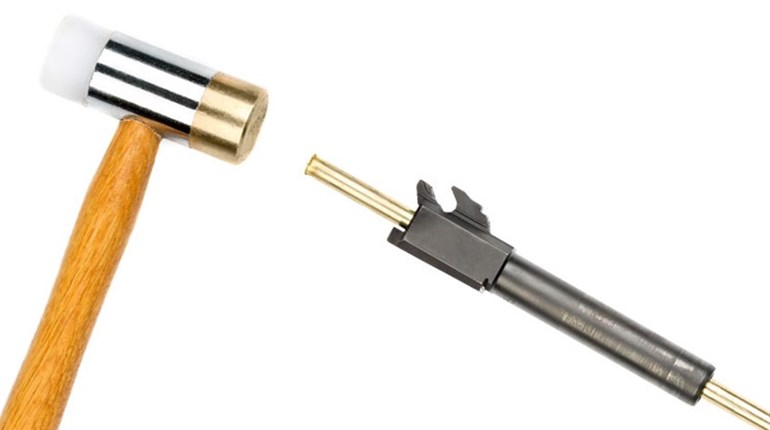
Myth 1: The Basics Of Gun Safety Are Only For Newbies
This is one of the worst, most dangerous gun-related myths there is. The basics of gun safety are for everyone, regardless of experience level. There is an old saying: Familiarity breeds contempt. What it means is that the more familiar you are with something, the less respect you have for it. That's a bad mistake when it comes to guns. The safety lessons you learn in the beginning apply now and for life. And because the rules don't change regardless of experience, don't be afraid to voice safety concerns when you see someone violating basic gun safety rules, no matter who they are. Gun safety rules apply to everyone at all times.
Myth 2: Ammunition Explodes In Fire
If you look at the quantity of gunpowder contained in a cartridge, it is actually quite small. It isn't the "explosiveness" of the gunpowder alone that drives the bullet when a gun is fired. It is the pressure created by the rapidly burning powder converting to a rapidly expanding gas in a tight-fitting chamber that drives it. If the cartridge weren't in the confines of the chamber (or something equally tight-fitting) and had ample room to expand, there would be little or no pressure and little danger. The primer might detonate and the powder would burn, but after pushing the bullet free from the case with relatively little force, the burning gas would expand freely in the open and quickly dissipate-as would its energy. (With all that in mind, however, we still recommend that you don't try this...if only because it's a waste of ammo!)
However, rounds actually chambered in a gun that is exposed to fire or high heat will fire with full, lethal force.
Myth 3: Top-flight Competitors Achieve Perfect Steadiness
This myth can frustrate new shooters who come to believe they are doing something wrong and will never achieve their shooting goals. Well, for the record, no one achieves perfect steadiness. Not Olympic shooters, not Camp Perry shooters-no one. It's just not possible. What high-level shooters can do is minimize their "wobble area," which is the amount their sights move on the target. While it may sometimes seem that the sights pause on the target for an instant, they resist the temptation to yank the trigger at that moment. They simply try to achieve as small a wobble area as possible and, while maintaining it, increase the pressure of their trigger press until the trigger breaks.
Myth 4: Short-Barreled Guns and M1911s Are Inaccurate
Guns with shorter barrels are often decried as inaccurate. This is particularly the case with iron-sighted guns, particularly handguns. The fact is that short-barreled guns can be very accurate–theoretically. It's just that they are difficult to shoot well due to their short sight radius. The sight radius–the distance between the front and rear iron sight–is much shorter on a short-barreled gun. At first, it seems like the close proximity of the front and rear sights on a short-barreled gun would make them easier to align. Well, it does make them faster to align, but their closeness also means that any barely perceptible flaw in alignment makes for greater inaccuracy. A long sight radius makes it easier to recognize misalignment. Moreover, the longer the sight radius, the less of a factor that same misalignment becomes. In other words, if your sight alignment is off just a smidgen in a long-barreled gun, that same smidgen represents a much greater flaw in a short-barreled gun and will create much more inaccuracy.
A simple fix is the addition of an alternative sighting option, such as an optical sight, red-dot scope or a laser.
That said, long-barreled guns do produce greater velocity than short-barreled guns of the same chambering. For that reason they can be expected to be flatter-shooting and somewhat more accurate at longer ranges.
As far as the myth that M1911 guns are inaccurate, this myth is falling away with time, but you still hear it occasionally. It is due to the fact that many shooters had their first (and sometimes only) experience with the military-issued version that was the basic service pistol of the U.S. Armed Forces for 74 years. Those guns, in addition to typically being old and hard-used, were actually built with generous tolerances (the amount of variance allowed in the dimensions of component parts). This gave the guns a "loose" fit and allowed them to continue operating when dirty. This was very important to soldiers and Marines engaged in combat who were fighting in dirt, mud, dust, sand, etc. A loose fit, while making the guns more reliable across a broad range of conditions, also meant that the pistols weren't as accurate as they could have been. Modern commercial M1911s, though, are built with very close tolerances and are reliable in the conditions encountered by civilian shooters. Target models and premium carry M1911s are capable of outstanding accuracy, which is one of the reasons this classic pistol continues to be a favorite of handgun shooters.
Myth 5: Dry-Firing A Gun Is Harmful
To be fair, this is sometimes true. Dry-firing most centerfire rifles and handguns is perfectly safe once you have made certain they are unloaded and pointed in a safe direction. However, excessively dry-firing a rimfire gun is a bad idea. The firing pin of a centerfire gun is designed to strike a primer located in the center of a cartridge's base. When no cartridge is present, the firing pin strikes nothing. With a rimfire, though, the firing pin is positioned to strike the soft brass rim of the cartridge. When no cartridge is present, the firing pin strikes the hard steel of the breechface. Repeated dry-firing of a rimfire can eventually peen the firing pin, dulling it and causing misfires. Dry-firing offers convenient, easy practice, but if you are going to dry-fire a rimfire gun, invest in some snap caps first. These dummy rounds will cushion the firing pin's fall.







































